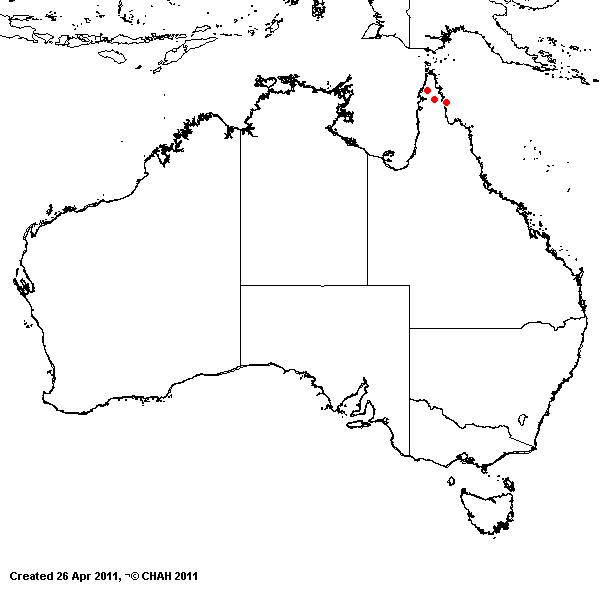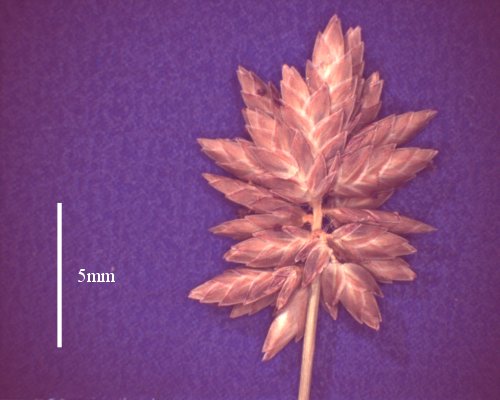Eragrostis capitula M. Lazarides.
Aust. Syst.
Bot.10: 103
(1997).
Classification. (GPWG 2001) : Subfamily
Chloridoideae. Cynodonteae.
Type of Basionym or
Protologue Information: Australia:
Queensland, Cook Distr., Iron Range,
20 Jun 1948, L.J. Brass 19270 (CANB; IT: BRI).
Key references
(books and floras): [2002] D.Sharp & B.K.Simon, AusGrass, Grasses of
Australia.
Habit. Perennial.
Culms erect, 13–50 cm tall, 5 -noded. Mid-culm internodes glabrous or pilose or
hirsute. Leaf-sheaths scaberulous, hairy. Ligule a fringe of hairs, 0.2 mm
long. Leaf-blades curled, flat or involute or convolute, 12–25 cm long, 2–4 mm
wide. Leaf-blade surface scabrous, indumented.
Inflorescence.
Inflorescence compound, a panicle. Panicle oblong or globose, 5–22 cm long,
5–10 cm wide.
Spikelets.
Spikelets sessile. Fertile spikelets many flowered, with at least 2 fertile
florets (9–11), comprising 9–11 fertile floret(s), with diminished florets at
the apex, ovate, laterally compressed, 5 mm long.
Glumes. Glumes
similar. Lower glume linear or ovate, membranous or cartilaginous, keeled,
1-keeled, 1 -nerved. Upper glume linear or ovate, 1.3–2 mm long, membranous or
cartilaginous, keeled, 1-keeled, 1 -nerved.
Florets.
Fertile lemma 1.8 mm long, keeled, 3 -nerved. Lemma apex muticous. Palea 2 -nerved. Anthers 3. Grain 0.5–0.6 mm
long.
Continental
Distribution: Australasia.
Australian
Distribution: Queensland.
Queensland: Cook.
Notes.
A distinctive species apparently isolated in its relationships, with a compact,
capitate panicle, ovate spikelets, and hirsute panicle and foliage.
Endemic;
restricted occurrence in Qld on Cape York
Penin.. On quartzite ridges.; flowers in June; fruits in June.



